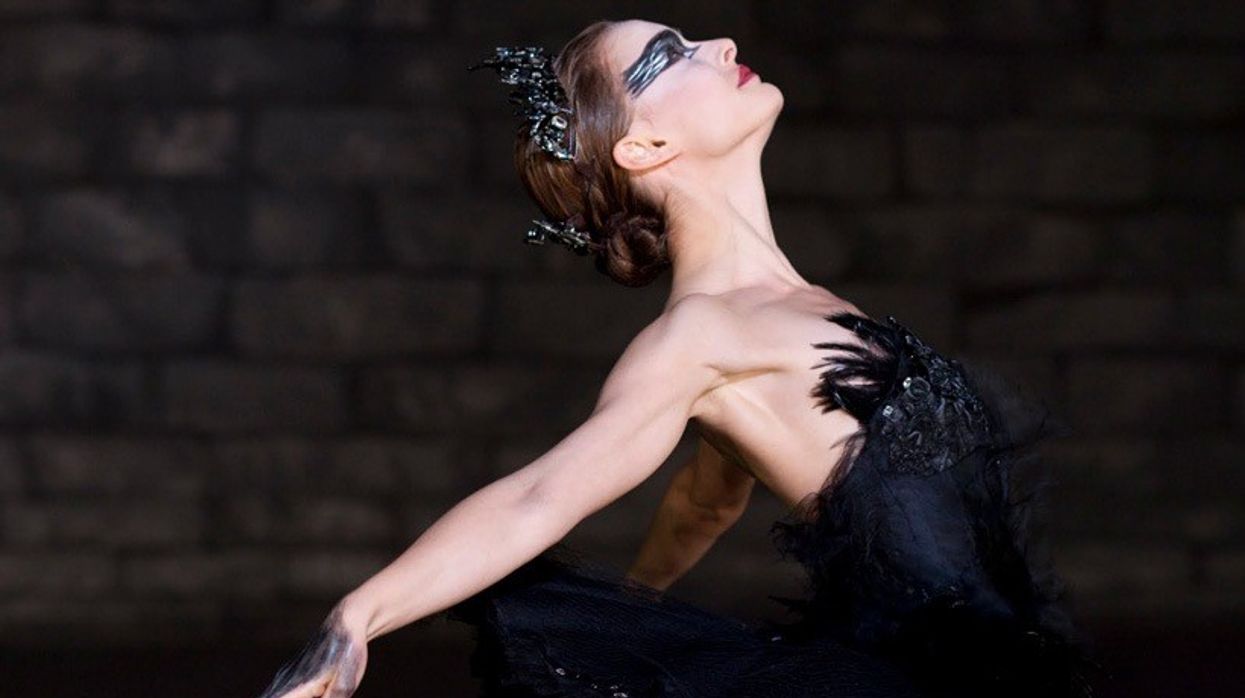Darren Aronofsky's 'Black Swan' Shot on ARRI Super 16mm, Canon 7D, Canon 1D Mark IV, and Canon 5D Mark II

I finally saw Darren Aronofsky terrific Black Swan last night, and the wonderfully textured, handheld 16mm cinematography of Matthew Libatique, ASC is one of the film's many highlights. There were a couple of shots that looked eerily familiar to me, however: the scenes taking place on a subway train. Here's why: I recently shot on a New York City subway with a Canon DSLR, and Black Swan in fact did the same thing. In addition to the ARRI Super 16mm camera, Aronofsky and Libatique employed a Canon 7D and 1D Mark IV on the film itself, and shot the ballet rehearsals on a 5D Mark II.
Here's a clip of the film's kinectic cinematography in action:
By itself, the fact that a DSLR was used on a feature film is becoming less and less newsworthy. But I think it's important to note that DSLRs are not being used because they're better than film (indeed, the subway shots look a bit soft and lack the organic grit of the rest of the film, despite the addition of grain in post); they're being used because they go places that a full-size film rig can (or should) not. Similar to the reasons the crew on the TV show Houseused a 5D to shoot their season finale, Black Swan employed DSLRs for their maneuverability and accompanying (lack of) crew size. Here's Libatique on their DSLR use (see below for the link to the full interview at American Cinematographer):
It was a single-camera shoot except for maybe one day, and our main camera was an Arri 416, which we used with Arri Ultra Prime 16 lenses. We used a Canon 7D or 1D Mark IV for all the subway scenes; I could just carry a 7D and shoot on the subway all day with a very small crew. I did some tests with my wife beforehand to figure out my ASA, my stop, and how I was going to deal with the focus. I didn’t use any rigs with it because I wasn’t trying to shoot in the traditional way. I tested a bunch of different exposures and then brought the footage to Charlie Hertzfeld at Technicolor, who put it in the system so I could look at the highlights, the moiré and the resolution. Then I went back to the drawing board to do more tests. The 7D has more depth of field than the 5D, but I needed that because I didn’t have a follow-focus unit and needed to work really fast. I shot everything documentary-style. I did all the focus pulls by hand, and we’d just look at it on the camera’s monitor. I ended up shooting on a Canon 24mm lens at 1,600 ASA to get as much depth of field as possible at a stop of T8.

shallower deeper depth of field, which would more closely match that of the 16mm sensor used to shoot the rest of the film. So next time anyone harps on the Panasonic GH2 or or any other Micro 4/3 camera as having "too small" a sensor, ask them if they saw Black Swan. These diminutive $1,000 DSLRs have a larger imaging sensor than the camera used to shoot Black Swan and a whole host of other films.
Link: Interview with Black Swan DP Matthew Libatique, ASC
[via EOSHD]











